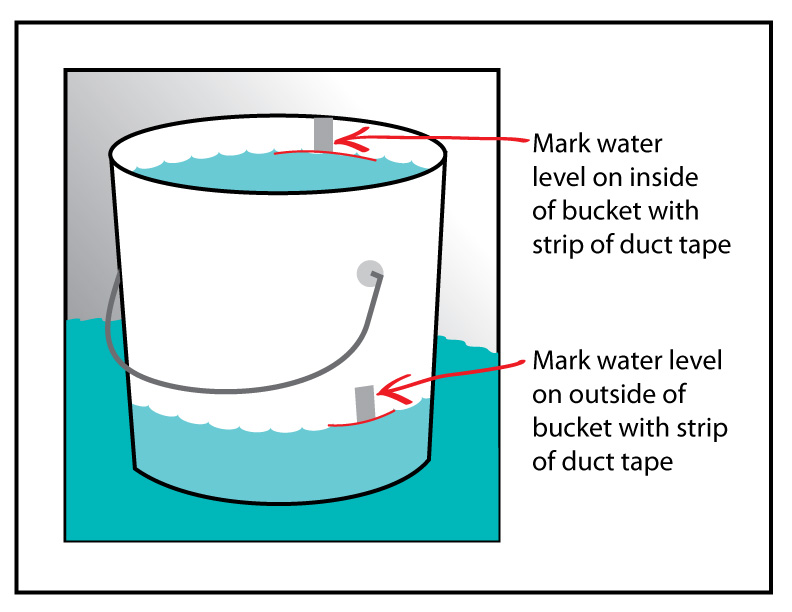Mon - Fri: 8:00 - 17:00
Saturday & Sunday: CLOSED
5 Finley Rd, Eumundi
Sunshine Coast, QLD 4562
Ph: 1300 851 842
Mobile: 0407 202 064
Swimming Pool Leak Bucket Test
How to do a swimming pool leak bucket test
Evaporation is dependent on a variety of environmental and pool related conditions, (wind, water temp, dew point, barometric pressure, and other to a lesser extent). Because of this the evaporation rate can vary greatly from day to day and even pool to pool.
Before becoming too concerned about a leak you can do a simple test to determine if water loss in your swimming pool is due to a leak or is just evaporation. This simple test is called the bucket test.
Basically, the bucket test exposes water in a bucket to the same conditions as those affecting your swimming pool. By comparing the water loss in each, it is possible to determine if the pool is leaking or if supposed leaks are just the result of water being lost to the air.
Bucket test procedure:
- Bring the pool water to its normal level
- Fill an empty bucket with pool water to about one inch from the top of bucket. (By filling the bucket close to the top you are ensuring that air movement over the surface of the bucket will similar to that of the pool.)
- Place the bucket on the first or second step of the pool. To keep it from floating away it may be necessary to place a few bricks or rocks into the bucket. (By placing the bucket in the pool water you are ensuring that the water temperature of each will be similar).
- Mark the water level inside the bucket.
- Mark the water level of the pool on the outside of the bucket, on the pool wall, or skimmer face plate.
- Operate the pool for 24 hours as it had been operated when a leak was first suspected.
- After 24 hours, compare the two levels. If the pool water (outside mark) goes down more than the inside water level, there is probably a leak.

Calculating the gallons of water lost from you pool
To more effectively visualise the leak or leaks you have it will be helpful to translate inches of water lost into gallons of water leaking. First subtract the bucket loss from the pool loss. The result will be inches of water lost due to leaks.
Next calculate the square footage of the water surface of your pool. Then enter these results into the following equation:
Inches of water lost x Area of Pool Surface (in square feet) x .62 gallons
Visualising the actual size of your leak is easier and as you can now translate this number into gallons of water lost per hour or per minute. You may also find it valuable to calculate how much you are spending on chemicals or for that matter water to re-treat or replace the water that has leaked from the pool.
Conversions:
Feet to metres - 1Ft - 0.305m
Inches to centimetres - 1" = 2.54cm
Gallons to litres - 1 Gal = 3.78L
Establishing suspected leak locations with a "Pump on/Pump off test"
Comparing the results of subsequent bucket tests with the pump on for 24 hours to the results with the pump off for 24 hours can provide additional information on the leak’s location.
- Water loss pump on > water loss pump off = suspect return plumbing leaks (Pressure side plumbing)
- Water loss pump on < water loss pump off = suspect skimmer/main drain plumbing leaks, (Suction side plumbing)
- Water loss pump on = Water loss pump off = suspect shell, liner or fitting leaks, (non-plumbing)
Although these tests are prone to false results because of varying environmental conditions during the tests, the information they provide can at least establish suspect locations to begin your leak search. Giving this information to a leak professional will help them to efficiently solve your pool leak problem.
- Tags:
- Bucket Test
- Leak Detection



